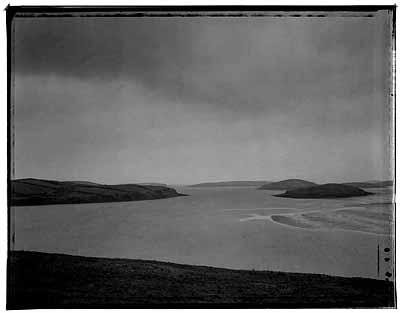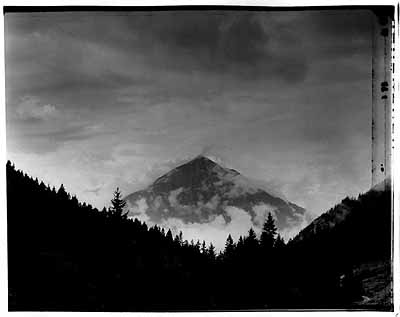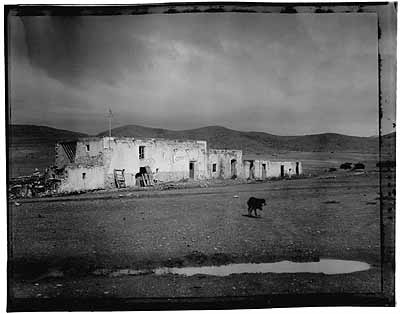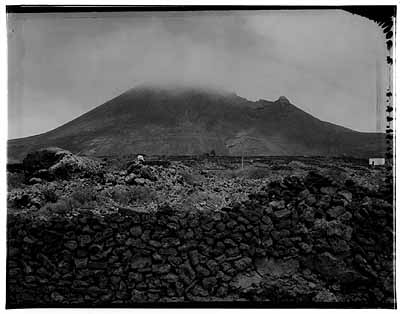
Reto Camenisch »
Places - landscapes and tattoo
Exhibition: 5 Mar – 4 Apr 2004

A partnership between: New Zealand Centre for Photography Wellington Museums Trust Positively Wellington Waterfront Exhibitions supported by: Museum of New Zealand Te Papa Tongarewa New Zealand Arts Festival Embassy of Switzerland Idiom Studio Wellington Gallery Roemerapotheke, Zürich Museum of Wellington City and Sea Alexander Turnbull Library Lion Foundation Evoking the first day In 1827 Nicéphore Niepce was experimenting with chemicals in his workroom, waiting in the dark to see what might happen; Louis-Jacques-Mandé Daguerre and William Henry Fox Talbot varied his theme twelve years later and waited feverishly to observe the results. Not long afterwards, David Octavius Hill stood in his laboratory and watched a landscape emerging in the chemical bath. The processes taking place during these primordial moments in photography are unimaginable today, when a digitized picture appears on the camera display in response to a simple click. Without a trace of nostalgia, the photographs of Reto Camenisch hark back to those moments in which a sense of wonder still accompanied the sight of images emerging from the darkness. How long does a photograph need to develop into a true picture? Was it really a coincidence that Goethe put the finishing touches to his Faust II at the very time when these pioneers of photography were at work? His great drama centers on the fullness of time, that time which is replete with the present, when the present looms out of the darkness of the past as in a laboratory, from the recesses of memory, or indeed as in a photograph. The fullness of time is a fleeting moment, a mere instant which brings forth plenitude – and simultaneously witnesses its passing away. It is that moment which is neither black nor white but is veritably pregnant with impressions, when black and white pass over into the colors of the rainbow. It is a particular moment which will never again assume quite the same form. This is – and Roland Barthes was by no means the first to remark on it in his «La chambre claire» – the candid secret of photography. Reto Camenisch has set out to plumb its mystery. His landscapes truly seem to arise again in the act of being viewed until the observer gradually acquires the impression of being present at the original location – in the midst of the primeval forest of New Zealand or the inhospitable crags of a seashore in Brittany. A primal force speaks from these pictures, a directness and presence evoking that fullness of time which breaks into the stereotypical passage of metrically continuous time or even swallows it up. The moment then becomes a place which the photographer calls a kind of homecoming – although not a single human form appears on these landscapes. Indeed, all signs of human presence have been airbrushed out of the picture so that primeval nature stands out starkly in the sculptural monumentality of its forms. Here, the only intervention comes – as in Ansel Adams – from the gaze which scans the landscape. The gaze sees the whole and yet cannot escape a sense of loss, for these landscapes are expansive, almost too big to be compassed. They are tainted with the element known to the aesthetic sensibility since the eighteenth century as the sublime – but Camenisch succeeds in stopping the feeling of being overcome from sliding into pathos. And yet these pictures certainly contain pathos: as a passion – for the place, for the moment, for a picture which only gradually emerges in its full majesty. At first the darkness which the photographer allows to prevail produces a feeling of irritation. He certainly favors black, but his black is truly a color, a hue and shade beyond darkness. In fact, his pictures light up, the brightness emerges softly with ever greater clarity as a foil to the darkness, a leaf here, a branch there, yonder a pattern on a rocky outcrop. «The color black is the color of time» writes theoretician of art Boris Groys in his essay «B/W». «Time shows its unalloyed blackness when it becomes space. The whole world, including the sun, came into being in time and passes away in time. The blackness which we sense behind each picture is the span of time in which all light is extinguished. In this space of time we recognize our true home.» The photography of Reto Camenisch has its being in these intermediate spaces. Its movement reflects the emergence into visibility of the first photograph. And in an elemental sense this moment evokes the theological concept of creation, before which even we, heirs of the Enlightenment, still stand uncomprehending as before a black hole. Konrad Tobler, summer of 2003

